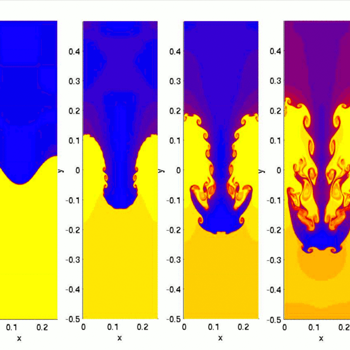How does NMR spectroscopy work?
2 Answers
NMR is an analytical technique used in elucidating the structures of organic compounds.
Explanation:
it makes use of magnetic spins of the nuclei of atoms.
NMR spectroscopy directly interrogates
Explanation:
Of course, there are other nuclei whose NMR spectra we could assess, but in the modern organic and inorganic laboratories,
Any groups (of hydrogen, carbon etc.) that can be interchanged by a proper axis of rotation or a fast moving process are said to be
If you knew nothing of NMR spectroscopy, you could look at a molecule of propane,
And, conveniently, the area under the curve of these signals is proportional to the number of hydrogens; i.e. for
Protons and carbon nuclei exchanged (only) by a mirror plane, are said to be enantiotopic (i.e. interchanged by an improper axis of rotation). Enantiotopic nuclei are equivalent in the standard experiment, and should give rise to the same chemical shifts in all achiral NMR experiments. Should a homochiral NMR solvent be used (i.e. an optically active NMR solvent, which do exist), their interaction with the enantiotopic nuclei is diastereotopic, and the enantiotopic nuclei may be differentiated and become non-equivalent.
On other hand, there are protons that are constitutionally equivalent; i.e. they may be attached to the same carbon, and yet they CANNOT be interchanged by symmetry or a fast-moving process. Such protons are called
Consider the methylene, the
I can't hope to teach you everything in a couple of paragraphs (for a start, I don't know everything). But consider a few simple molecules, and classify them on the basis of individual symmetries. Can the hydrogens be interchanged? If yes, 1 signal. If no, they should give rise to separate absorptions.


